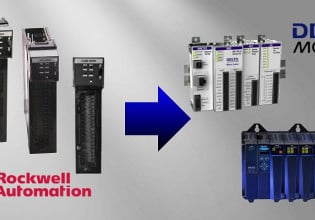Voxeljet Shows Off High-speed, Low-emission 3D Printing at BMW Group
In conjunction with Loramendi, Voxeljet demonstrates low-emission, high-speed 3D printing of sand cores at BMW Group's Landshut plant, enhancing engine component production.
Voxeljet’s latest 3D printer, the VX1300-X (VJET-X), is undergoing trials at the BMW Group, where it is being used to print sand cores. Sand cores are used extensively in the metal casting industry to create the internal shapes and features of large castings. In particular, the BMW Group is using sand cores for engine and cylinder head castings.

A student pours molten aluminum into a sand mold. Image used courtesy of author
Challenges With Sand Cores
Sand casting is a common and cost-effective method of manufacturing metal castings. The complex internal geometries of an engine or cylinder head often rely upon repeatable, well-designed sand cores that can be removed after metal has been cast. Traditional sand cores are pressed and sometimes fired to help them retain their shape during the metal casting process.
Sand cores must be rammed tightly enough to not break apart. Consider building a sand castle and watching it get swept away by the waves. Now consider that during the casting process, the metal is much more dense and heated to 750 °C (for aluminum alloys). Some cores are heated to cause them to sinter together for some extra strength, but that is an additional energy cost.
Furthermore, one of the major sticking points with sand casting is that often, the sand is not recyclable. Used sand has been contaminated and must be disposed of as waste. While some foundries are developing ways to reuse the sand, it is generally cost-prohibitive.

The VJET-X printing system is designed to mass produce sand cores for metal casting. Image used courtesy of Voxeljet
VX1300-X (VJET X) 3D Printers
One of the major drawbacks of 3D printing has always been the speed at which parts, especially large parts, are produced. With the VJET-X, large parts are made much more quickly than before. Voxeljet's VJET-X 3D printers have already demonstrated a 10 times increase in speed for producing sand cores compared to previous models. Its patented binder jet process allows strong sand cores to be printed using an inorganic binder that provides some of the strength required during the casting operation.
Furthermore, the unused sand is 100% recyclable. Unlike traditional sand cores, the process generates little waste, reducing the operation's raw material cost and environmental impact. Cores are then cured using a microwave process rather than gas or electrically heated furnaces.

Sand core produced by the VJET-X at BMW Group’s Landshut plant. Image used courtesy of Voxeljet
Fully Automated 3D Printing
The VJET-X printer can be integrated into a fully automated system. The BMW Group used these printers in their production line such that the entire casting process was automated, including the microwave curing process and the removal of the sprues, risers, and gates from castings.
Pioneering Production
Unlike traditional sand molds, 3D-printed molds allow for new geometries. As this technology matures, it will give engineers and designers more latitude to create new shapes that were not possible using old core models. Perhaps the latest, most efficient cylinder head design is out there, but it is not possible to make using traditional sand casting and is too expensive to machine. The 3D printing of sand cores by a VJET-X might be the answer.





